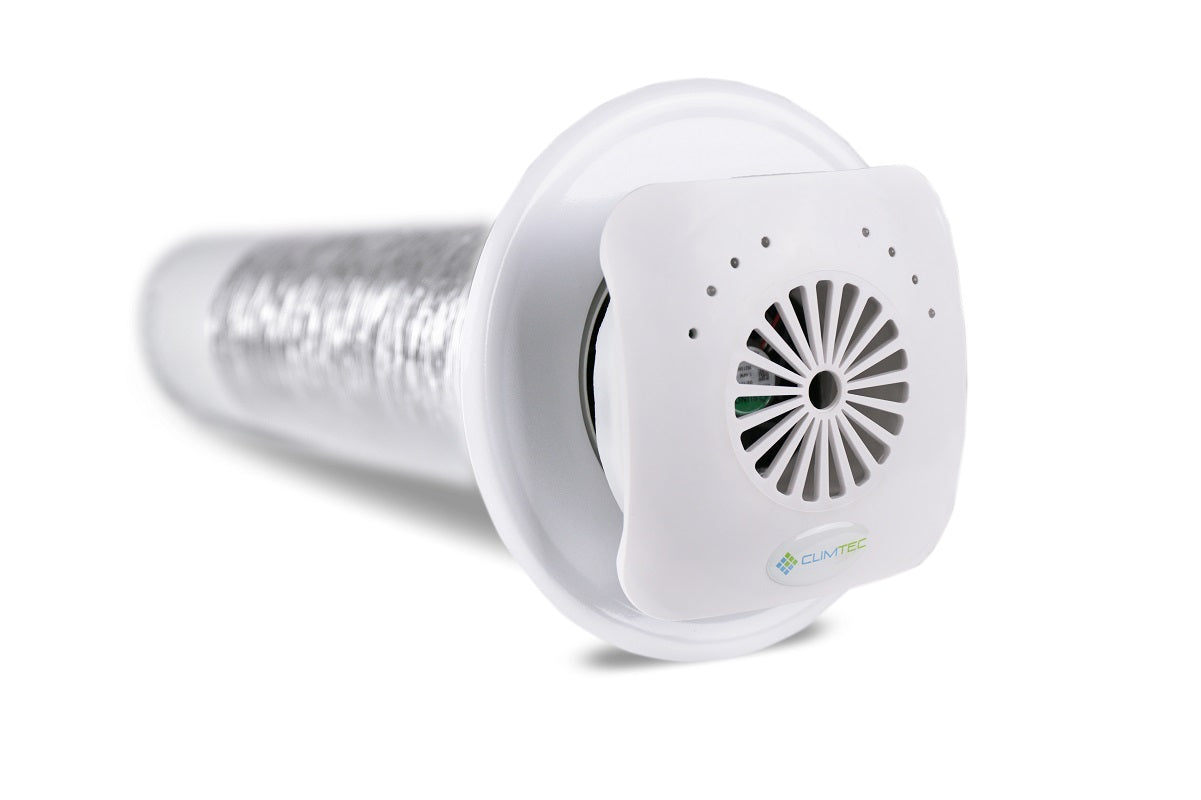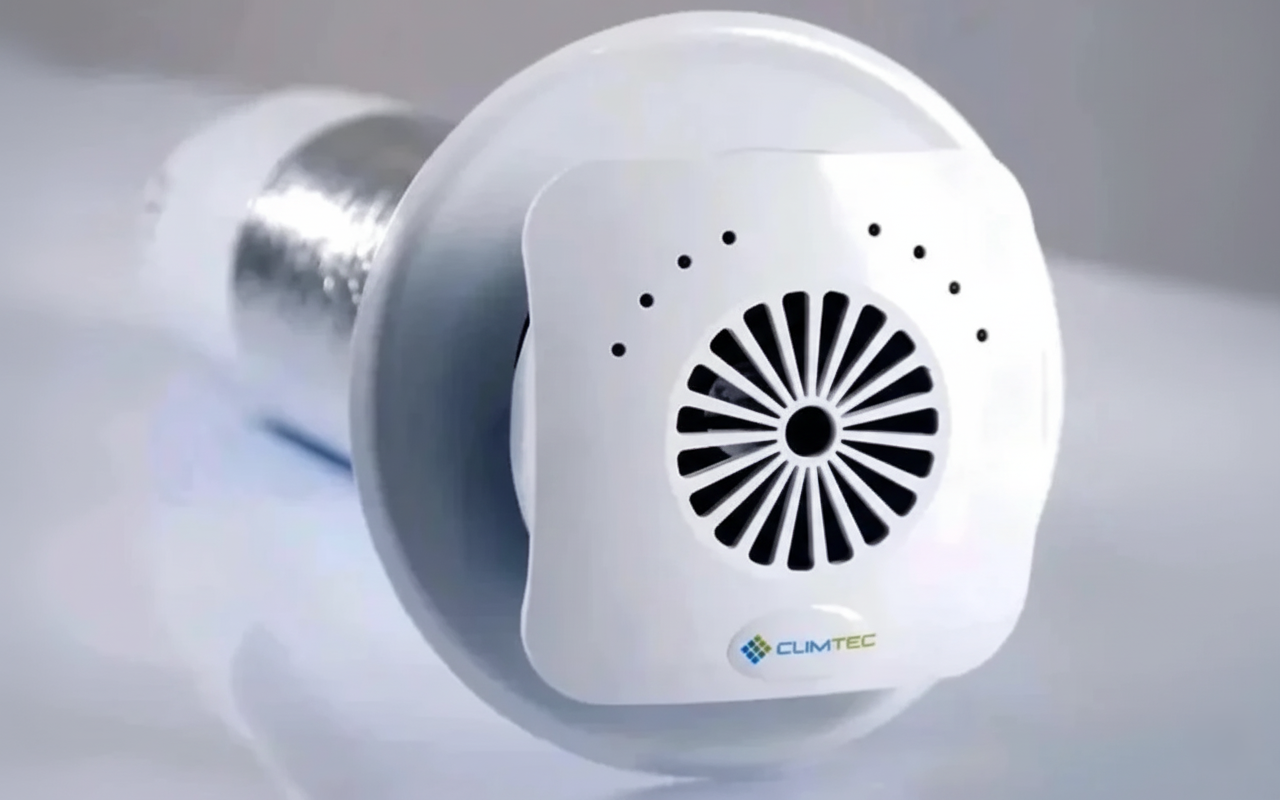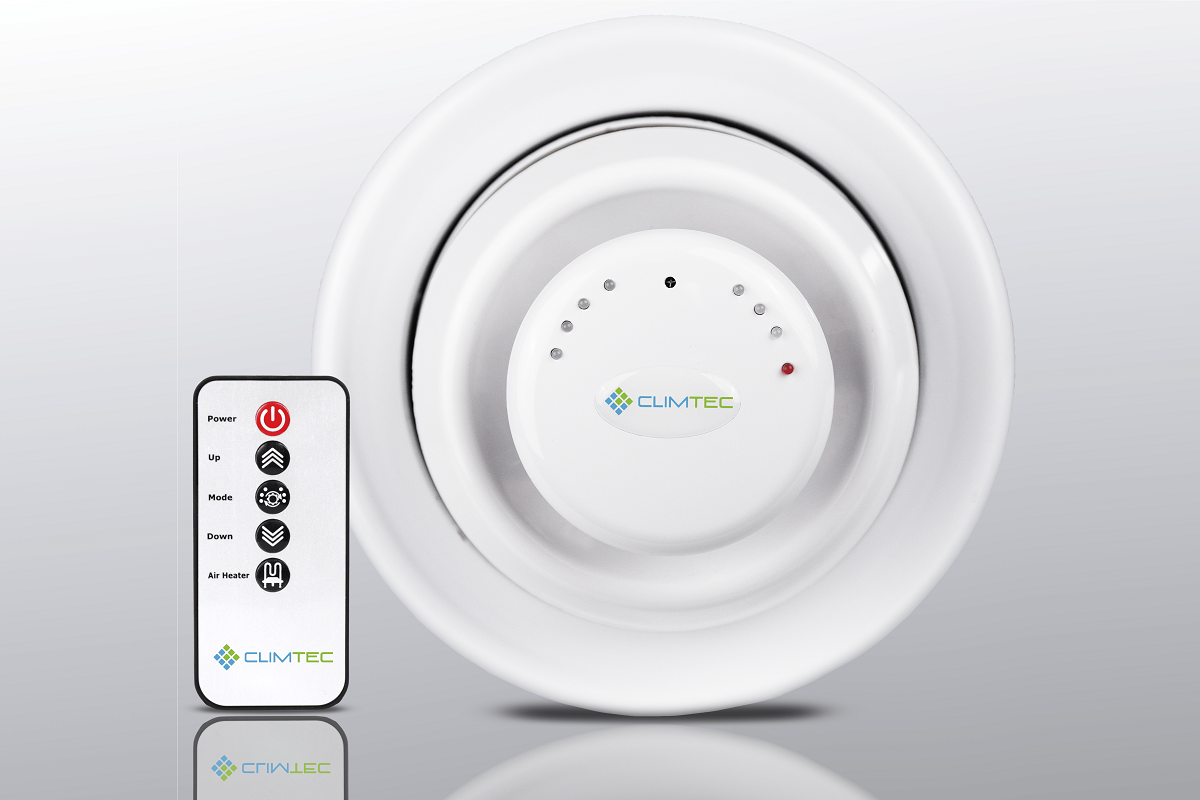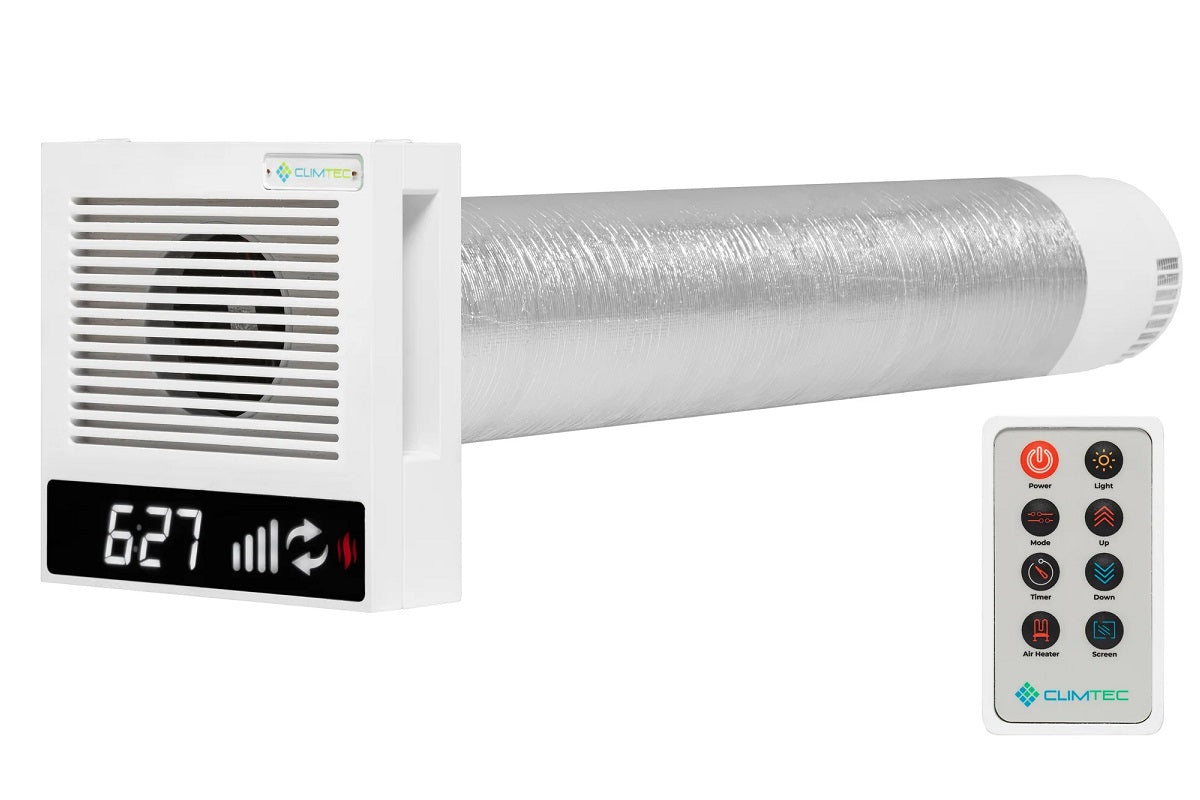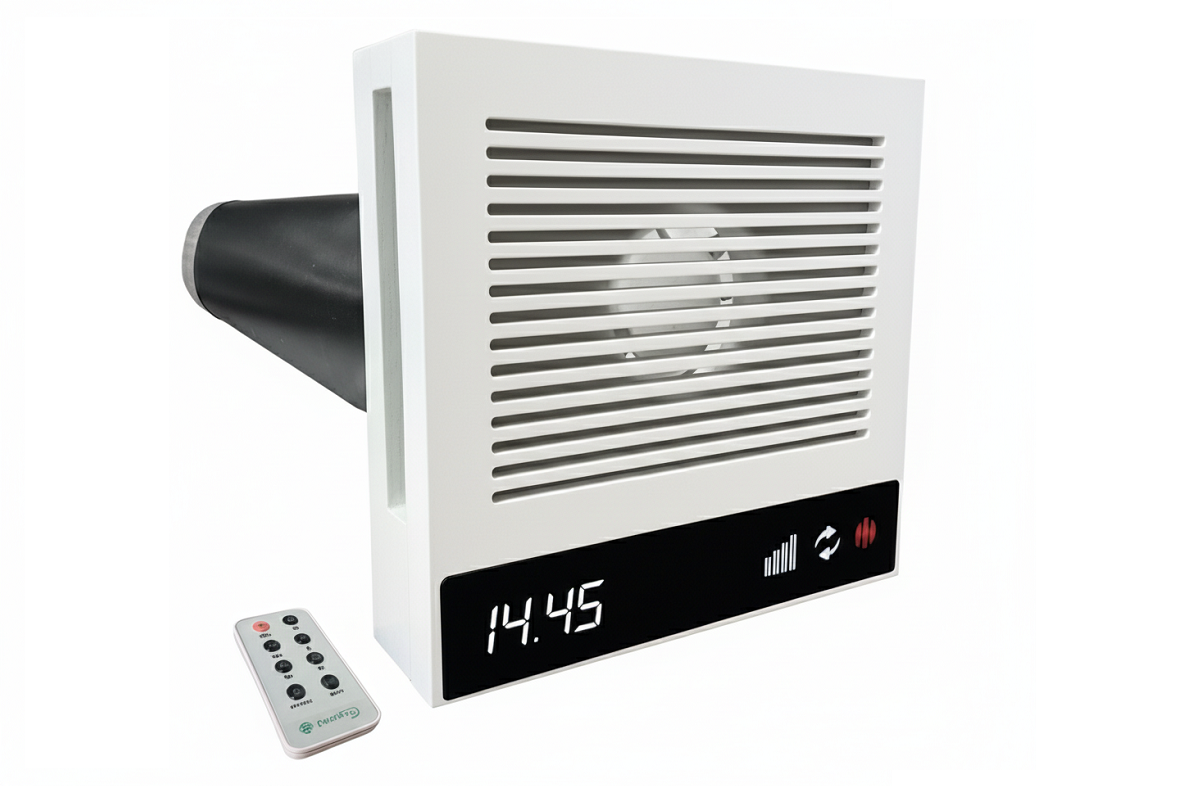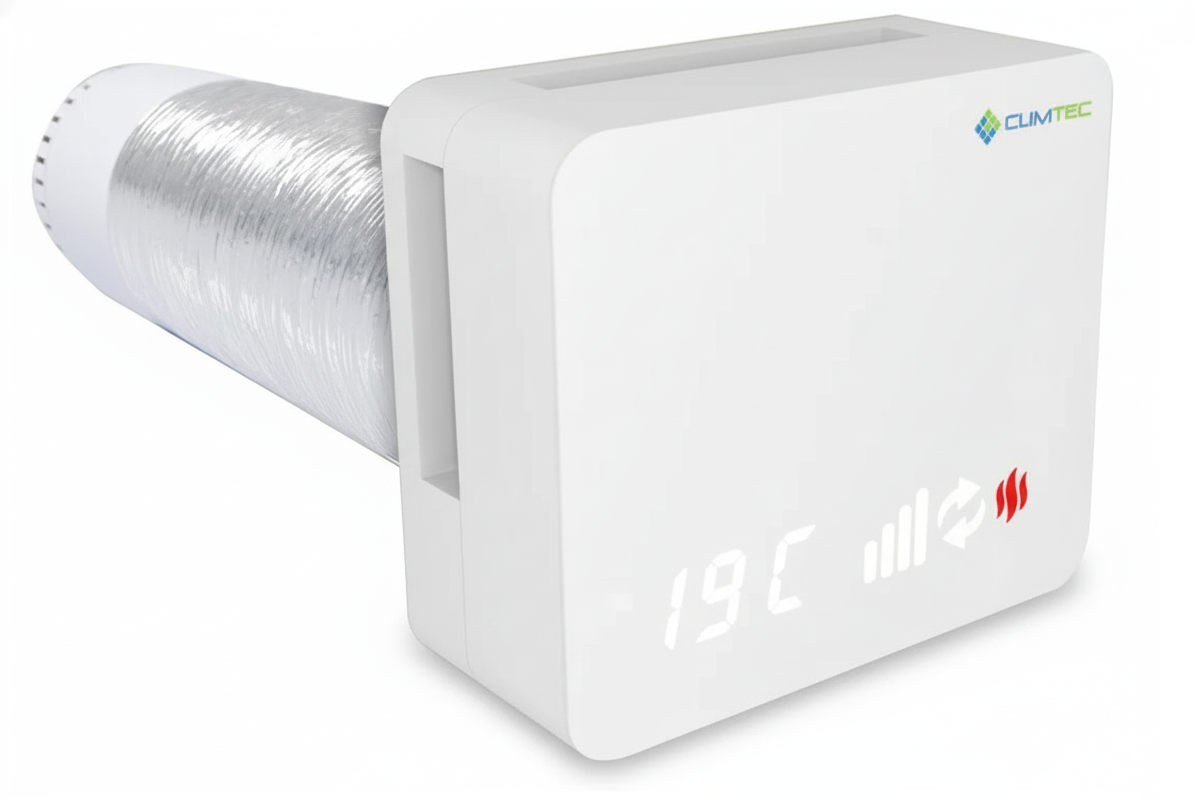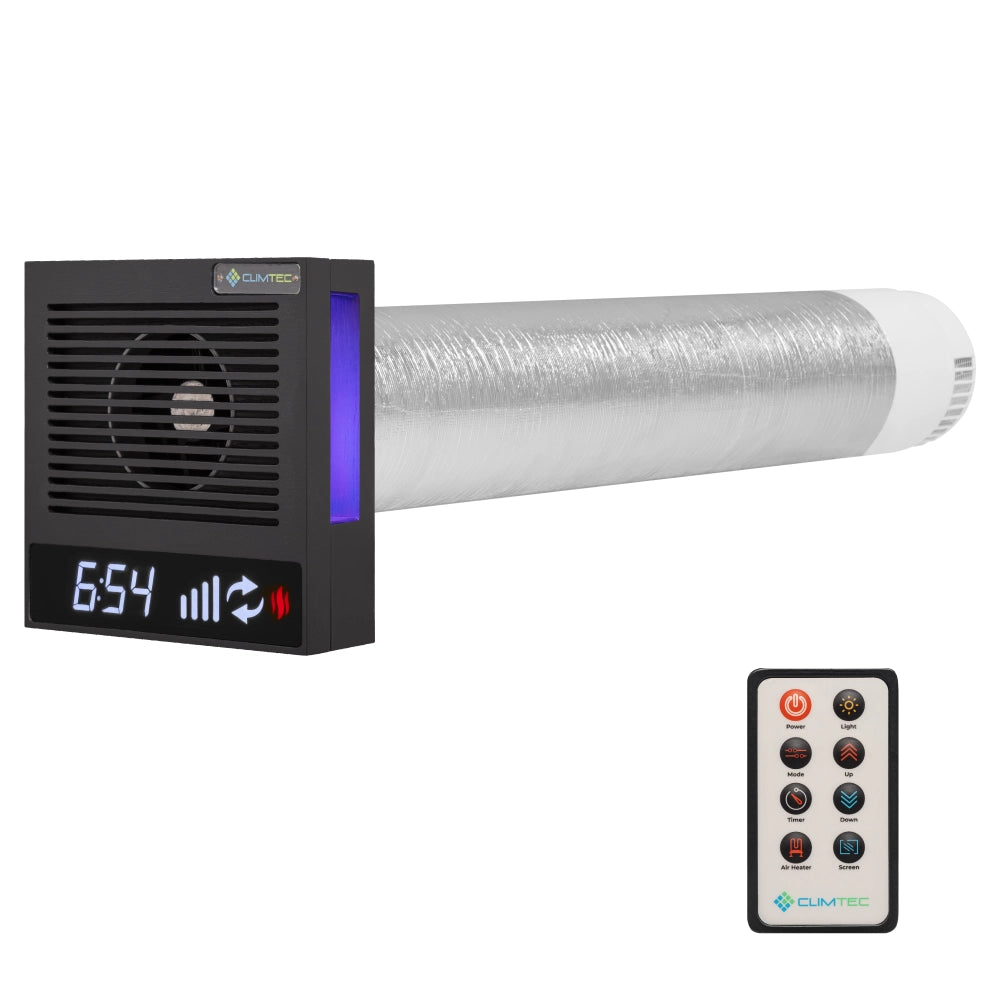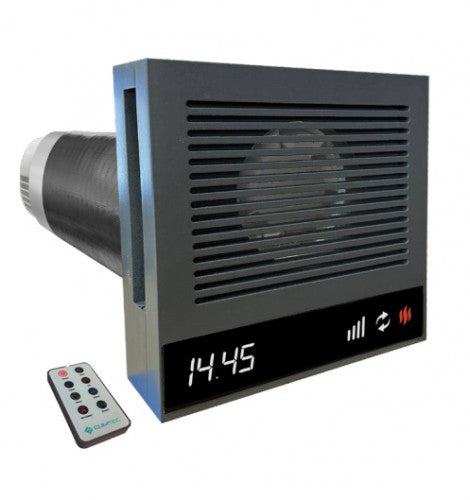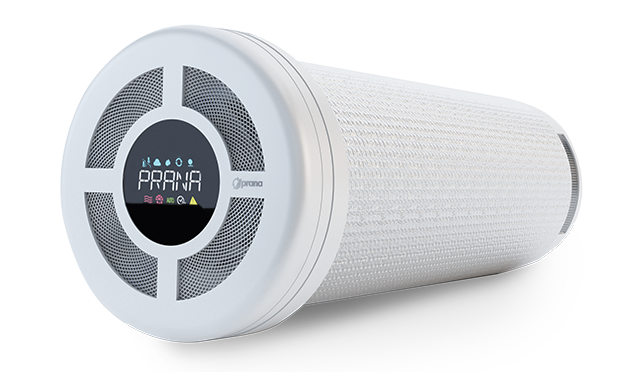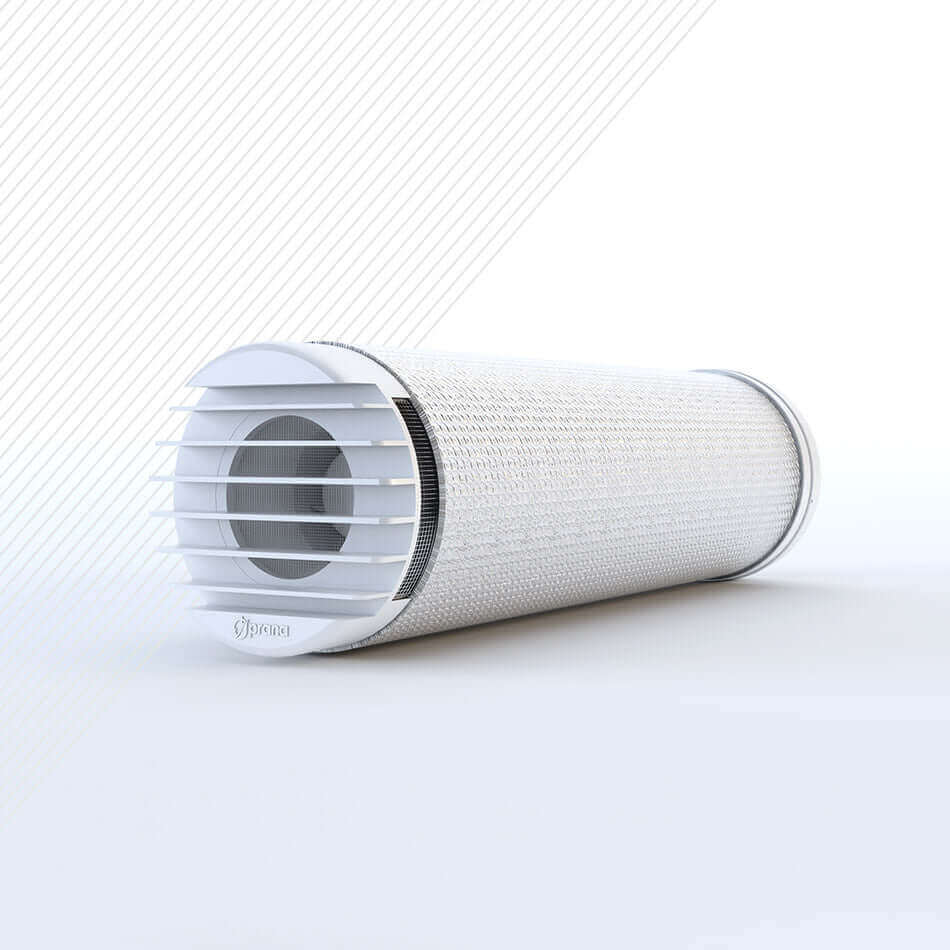Filters
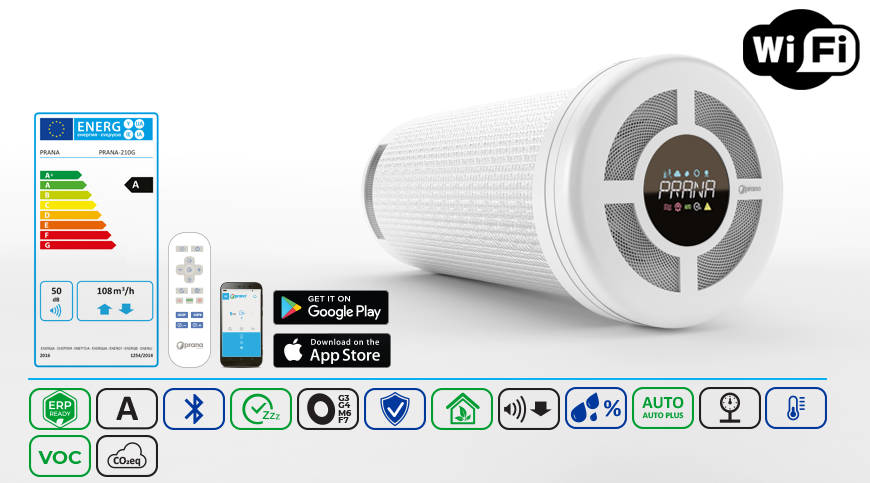
Small energy recovery ventilator
Why Choose a Small ERV or MVHR System?
If you’re dealing with limited square footage, large ventilation setups with ductwork simply don’t make sense. That’s where small MVHR units shine — compact, wall-mounted, and simple to install. They bring clean, oxygen-rich air into your space while drawing out stale, humid air, often through a single wall opening. Perfect for modern flats or renovations, a small ERV unit suits both permanent and temporary installations.
These units are a godsend in rooms where condensation or odour builds up quickly — such as washrooms, kitchens, or home offices. A small HRV unit quietly manages airflow, heat retention, and even humidity. Lightweight and stylish, they tuck neatly into your wall, ceiling, or cabinet, adding comfort without cluttering your home.
Compact Yet Efficient: Smart Ventilation in Small Packages
While they may look unassuming, modern compact ERV and HRV units are full of advanced features. Some models boast motion sensors, auto boost, humidity control, and remote scheduling — all housed in a box no larger than a toaster. Whether you’re aiming for better bedroom air or need an energy-saving solution for a garden office, these systems work efficiently and quietly.
Using advanced ceramic heat exchangers, a mini heat recovery ventilator can recover up to 90% of thermal energy. That means warm air in the winter stays indoors while stale air is pushed out — without opening windows. This level of performance, usually seen in whole-home systems, is now accessible in a mini recuperator perfect for tight areas or retrofits.
Small Heat Recovery Units: Where and Why to Use Them
Small heat recovery units are ideal for more than just apartments. They work beautifully in internal rooms with poor airflow, such as basements, utility rooms, or converted lofts. In a family home, they help eliminate local moisture problems and improve air freshness in rooms that don’t benefit from natural ventilation.
Because most small heat recovery ventilator units are ductless, they’re incredibly easy to plan into small-scale renovations. With their ultra-quiet fans and space-saving design, they’re increasingly used in energy-efficient projects, Airbnb units, and tiny homes. Whether you're upgrading an old home or building new, these little units do a big job.
What to Consider When Selecting a Small Unit
When choosing a small ERV system, start by considering airflow rates (m³/h), filter types, and noise levels. Do you need humidity control? Wi-Fi? HEPA filters? There’s a solution for nearly every requirement. A small HRV system will generally focus more on heat exchange, while an ERV helps with moisture balancing as well — ideal for more humid environments.
Some units are designed to be installed entirely from indoors — a huge plus in high-rise buildings or cold climates. Look for models with low power consumption, washable filters, and easy access panels. A quiet and energy-efficient small energy recovery ventilator will repay you daily in the form of clean air and lower heating bills.
- Recuperator PRANA 160 STANDARD – compact and reliable, ideal for small to medium-sized rooms. It efficiently recovers heat while maintaining steady airflow, ensuring fresh, comfortable indoor air all year round.
- Recuperator PRANA 210G STANDARD MINI – perfect for tighter spaces or apartments, this mini unit offers quiet operation and effective heat recovery. Its space-saving design makes it ideal for renovations or single-room upgrades.
- Recuperator PRANA 210G ERP PRO MINI – a professional-grade mini unit for high-demand or compact areas. It delivers superior airflow, heat recovery, and low-noise performance, making it excellent for modern flats, lofts, or offices.
Installation & Maintenance Made Simple
Another reason small heat recovery ventilation units are in high demand is the simplicity of installation. Most require just one hole in the wall — no major construction, no invasive ductwork. Many homeowners even choose them for DIY upgrades, especially in remote areas or second homes.
Maintenance is straightforward too. Every few months, just pop out the filters and give them a clean or replace them — most units will alert you when it’s time. The heat exchangers in compact ERV units rarely need attention, and the fan mechanisms are designed for long-term use. With minimal effort, your system continues to deliver healthy air and heat recovery for years.


